Periodization Confusion?
I have been reading Transfer of Training (Volume 2) by Dr Anatoly Bondarchuk and watching video(s) by Derek Evely. To understand their classification of training systems it is necessary to understand the classification of the exercises based on the specificity criteria. Thus, Bondarchuk identified four groups of exercises/methods:
| Name of exercise/method | Description |
|---|---|
| Competitive (CE) | Exercises that are identical or almost identical to competition event |
|
Specialized developmental (SDE) |
Exercise that repeat the competitive event in training but in its separate parts |
|
Specialized preparatory (SPE) |
Exercises that do not imitate the competitive event, but train the major muscle groups and physiological systems |
|
General preparatory (GPE) |
Exercises that do not imitate the competitive event and do not train the specific systems. |
Exercise classification based on work of Dr Anatoly Bondarchuk and UKA Exercise Classification Hierarchy
Based on the work of Christian Thibaudeau and Joe Kenn I have presented similar classification of the exercises in Concurrent strategies in Strength training article. The logic is similar, yet Bondarchuk classified based on exercise specificity, and Thibaudeau and Kenn classified based on importance of the exercises and this can be compatible in most cases. The logic behind it what it is important. Now let’s get back to training systems.
Based on the usage organization of the mentioned types of exercises/methods during the training process, Bondarchuk identified three basic training systems: (1)stage system, (2) block system and (3) complex system.
On the following picture stage training system is depicted.
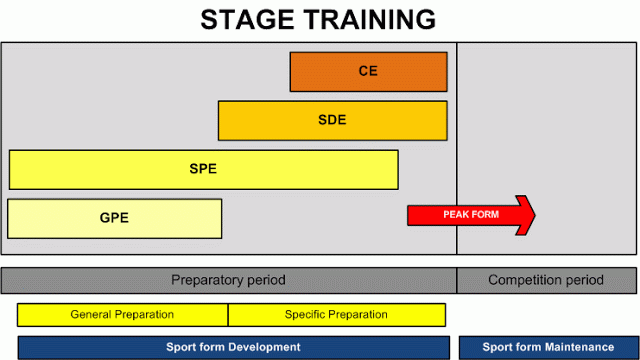
Some of the variations of this system include changing the complex of exercises for each group every 2-4 weeks. For example, exercises uses in SPE group might rotate every 2-4 weeks.
Based on the work by Anatoly Bondarchuk and Derek Evely block training system can be depicted by following two pictures:
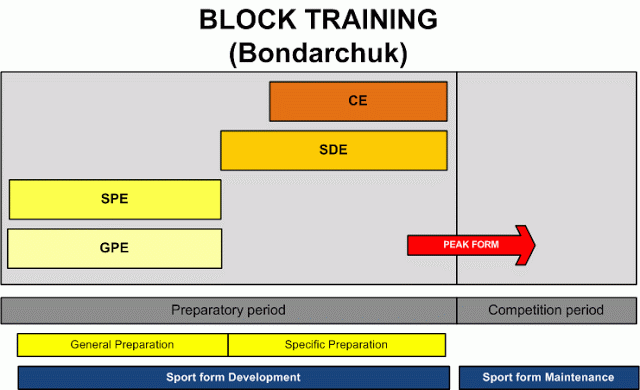
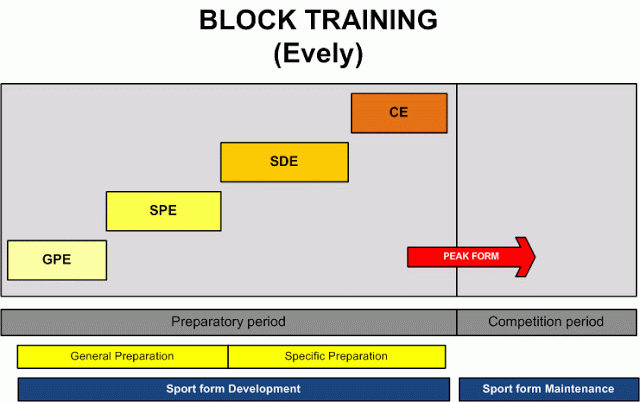
Same as with stage system, different variations could be applied by rotating complex of exercises for each group. For example, in Bondarchuk version on block training, exercise complex for GPE and SPE groups might rotate every 2-4 weeks, while for SDE and CE same complex of exercises is used thorough preparatory period. Variations in complex of exercises influence the phases of sport form development and sport form maintenance, by prolonging or speeding up each.
Based on some theoretical info, the achievement of sport form is manipulated by the ratio between different groups of exercises, most notably with relative volume of CE group. During the sport form maintenance the performance results are ‘kinda’ stable and to further improve the performance one need to ‘break’ or ruin the state of sport form and to rebuild it again into the higher level of sport performance. More on the theory of sport form could be found here. Thus during the phase of sport form development athlete’s performance might be variable (and progressive) while he increases the underlying factors and while ‘tuning’ all the sub-systems, but once he achieves the state of sport form his performance will be more stable at the certain (higher) level of performance. I am not expert on this subject and I guess we need more info regarding this ‘phenomena’.
On the following picture the complex system is depicted:
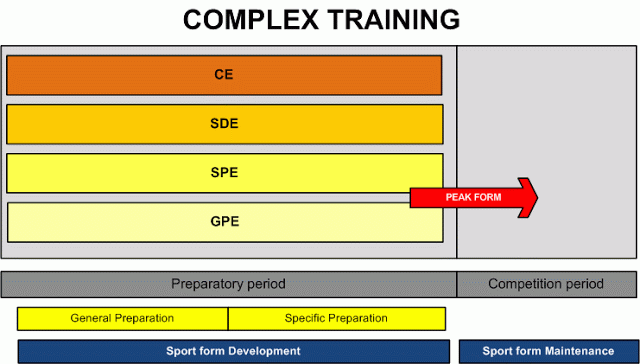
In complex training system all groups of exercises/methods are presented from the day one. As with other two training systems, variations of complex training might be induced by changing complex of exercises for each group every 2-4 weeks.
Each of the mentioned training system has pro’s and con’s based on the overall stress levels, injuries potential and sport form manipulations (based on competition schedule). These training systems developed over the years as the both coaches and scientists identified their weak points.
Based on the video by Derek Evely, “traditional periodization” could be considered stage training system. Soon, certain problems with it were identified and new models were seeking, along with changes in competitions calendar and thus preparation needs. More interested readers could get a thorough analysis in late Charlie Francis’ Key Concepts e-book.
Block training tried to utilize concentrated loading in each block so does residual training effects stays elevated during the next blocks. Again, certain problems were identified like great injury possibility by sudden switch in training emphasis. Carl Valle explained the concept of ‘adaptive stiffness’ (originally coined by late Charlie Francis) in his blog. Because of this we can identify smooth and sharp variations of block transitions.
Complex system is now the most utilized training system in track and field at the moment. One of the biggest shortcomings is the constant need for restorative means due high volume of training. Because of that during certain phases there is a different emphasis on certain groups of exercises/methods.
The point being taken here is that this classification system is based on the organization of the mentioned four groups of exercises/methods. As I always say in my articles training stimulus is compromised of (1) exercises (or means), (2) methods and (3) loads (or stress). Because of this, in my opinion grouping training systems based on the organization of exercises/methods based on the specificity criteria is too simplistic, due the fact that we don’t know the performance goals of each period and loads used. There might be different emphasis on each group of exercise over the training period and that might be more important than simple presence of the exercises in the training program.
Overall preparation process could be split into the following components:





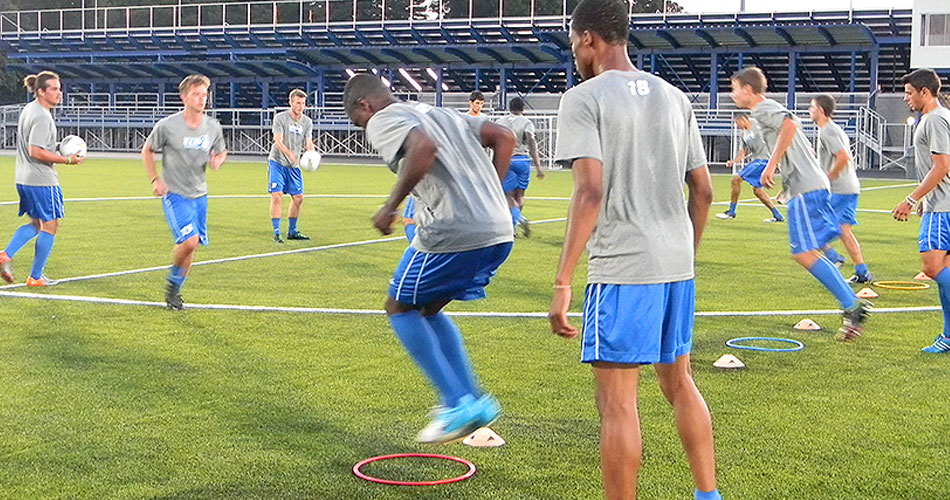
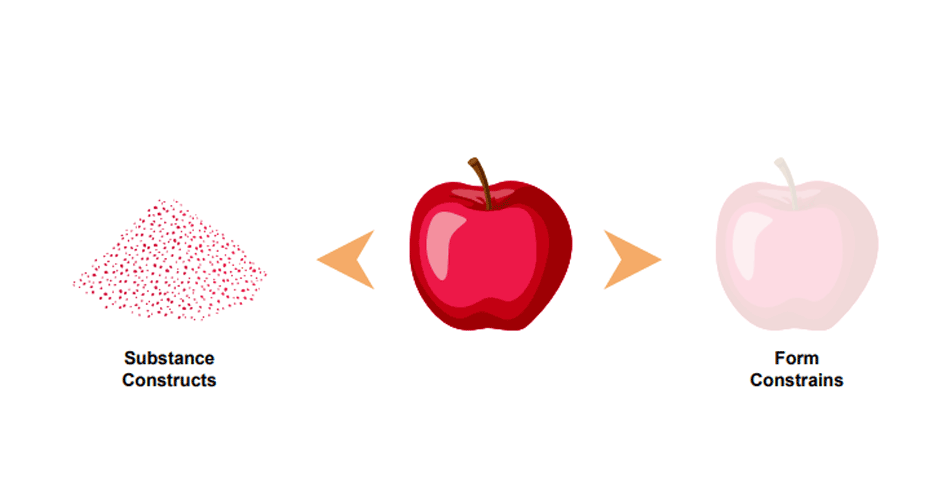






Responses